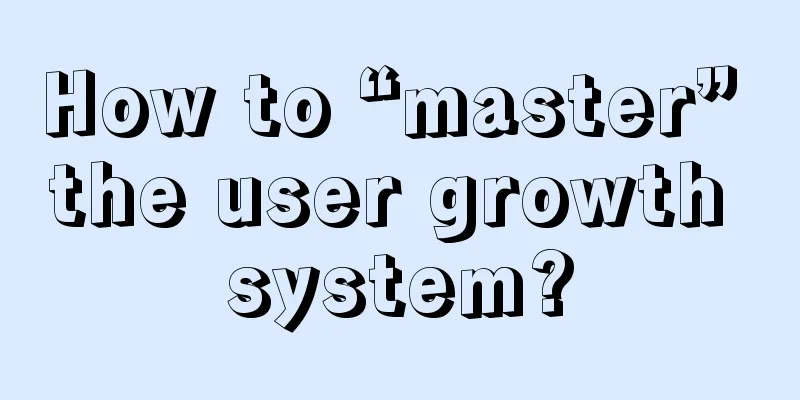The value that big data and artificial intelligence bring to advertisers

|
1. All these different moments combined can indicate to advertisers the best ads for specific occasions. This is called moment scoring, and the resulting simultaneous calculation results are the product of the combination of artificial intelligence (AI) and big data. 2. With so much data accumulation and such a fast decision-making speed, fully automatic advertising becomes feasible, but this does not mean that human contribution is not needed. Remember, the entire learning process of artificial intelligence requires human understanding to adjust parameters, advertising information, advertising creativity, and optimize their results. 3. Knowing the actual value of each time your ad is seen by an audience will be an important differentiator. How likely is it that a user will respond to your ad right now? That’s the main question. And the best approach is to stop guessing if you’ve already used artificial intelligence and big data to understand audience reactions. We live in a digital age where consumers have ample choice, forcing advertisers to make major changes to offer unique customer experiences, personalization, and adapting to consumer preferences and needs. Every day, we are bombarded with messages that inspire "inspiration and desire" no matter what we do. Therefore, we believe that the old way of targeting audiences based solely on profile information is no longer effective for advertisers. Now, it's all about finding the right moment! In this new world, advertisers’ success or failure will depend on understanding and acting decisively on the optimal moment, and on improving ROI. To do this, you need to tap into other parameters, such as understanding who your customers are, how they react in different situations, and quickly decide how and when to make suggestions to users. A person’s daily behavior is likely to be different. The same behavior in the fourteen hours before 2 pm on Tuesday and Saturday may be completely different. Everything around us influences purchasing decisions - whether a person has bought a plane ticket, whether it is raining outside, or recently watched an online video about how to develop a new piece of land. All of these different moments combined can point advertisers to the best ads for a particular occasion. This is called moment scoring, and the resulting simultaneous calculations are the result of artificial intelligence (AI) combined with big data. As the algorithm continues to produce instant calculations, our AI is constantly iterating and evolving, adding information in the process, allowing marketing to improve and strengthen its influence on consumers the next time they have the opportunity to see the ad. Data is continuously produced in this model, allowing advertisers to express their ideal public image and complete more successful advertising campaigns. Another example of the effectiveness of AI applications is "quick judgment". By filtering online footprints, consumers can be targeted with advertising campaigns based on their purchase behavior while online. For example, if someone buys something while browsing a sports website, he will be served sports-related ads. Over time, the learned AI will be able to identify who among these users is a fan of a certain sport (such as football). Using this result, consumers will receive a new score that will better help advertisers improve the accuracy of their target audience positioning than the previous score based on consumers' general interests. With so much data accumulation and such a fast decision-making speed, fully automatic advertising becomes feasible, but this does not mean that human contribution is not needed. Remember, the entire learning process of artificial intelligence requires human understanding to adjust parameters, advertising information, advertising creativity, and optimize their results. In this complex virtual world, understanding the actual value of each exposure to your ad will be a key differentiator for a successful campaign. How likely is it that a user will respond to your ad right now? That’s the main question. And the best approach is to stop guessing if you’ve used AI and big data to understand how your audience will respond. In other words, the key to making consumers feel good about your brand is to find the right moment, which will naturally make your campaigns perform best. Original text: How Advanced Analytics and Machine Learning AreTransforming Healthcare Source: iCruchdatanews By Edvaldo Acir Compiled by: Pinjue |
<<: The largest cable TV operator in the U.S. is launching Internet TV for $15 a month
>>: Rumor has it that 1haodian chairman Yu Gang and CEO Liu Junling have resigned
Recommend
Japanese anime One Piece【TV+Theater+SP+Diary】Chinese and Japanese bilingual Chinese subtitles collection
"One Piece" is a boys' comic work cr...
12 modes of short video monetization
This article summarizes some short video monetiza...
What will the automotive industry look like in 2020?
If you often follow the news about automotive tec...
Some thoughts on short video operations
I haven’t updated for a long time. Today I want t...
How to obtain seed users?
Many Internet products encounter two problems dur...
When doing activities, you must make clear these 3 points
Through the collation and analysis over the past ...
What efforts have people made in pursuit of "sweetness"?
Among the five flavors of sour, sweet, bitter, sp...
DJI is not the only company that has experienced frequent drone explosions: The drone industry still has a long way to go to mature
Recently, an article titled "Frequent explos...
How much does it cost to customize a health care product mini program in Yongzhou?
According to industry insiders, mini programs wil...
Here's everything you need to know about ski jumping
Beijing Winter Olympics Test Event 2021-2022 FIS ...
Starting from Dash iOS open source, don’t pursue perfect code too much
(Screenshot of Dash iOS source code) Some time ag...
Introduction to Xiaomi Information Stream Advertising Resources
Introduction to information flow advertising reso...
Keep product operation analysis!
1. Demand Background 1.1 Review of Competitive Pr...
Case analysis: Detailed explanation of how to attract precise fans through 0-cost Weibo promotion!
In terms of promotion and traffic , different pro...
Douyin operation: Enterprises, you must not do Douyin!
Companies must not do TikTok! In 2019, ByteDance’...









